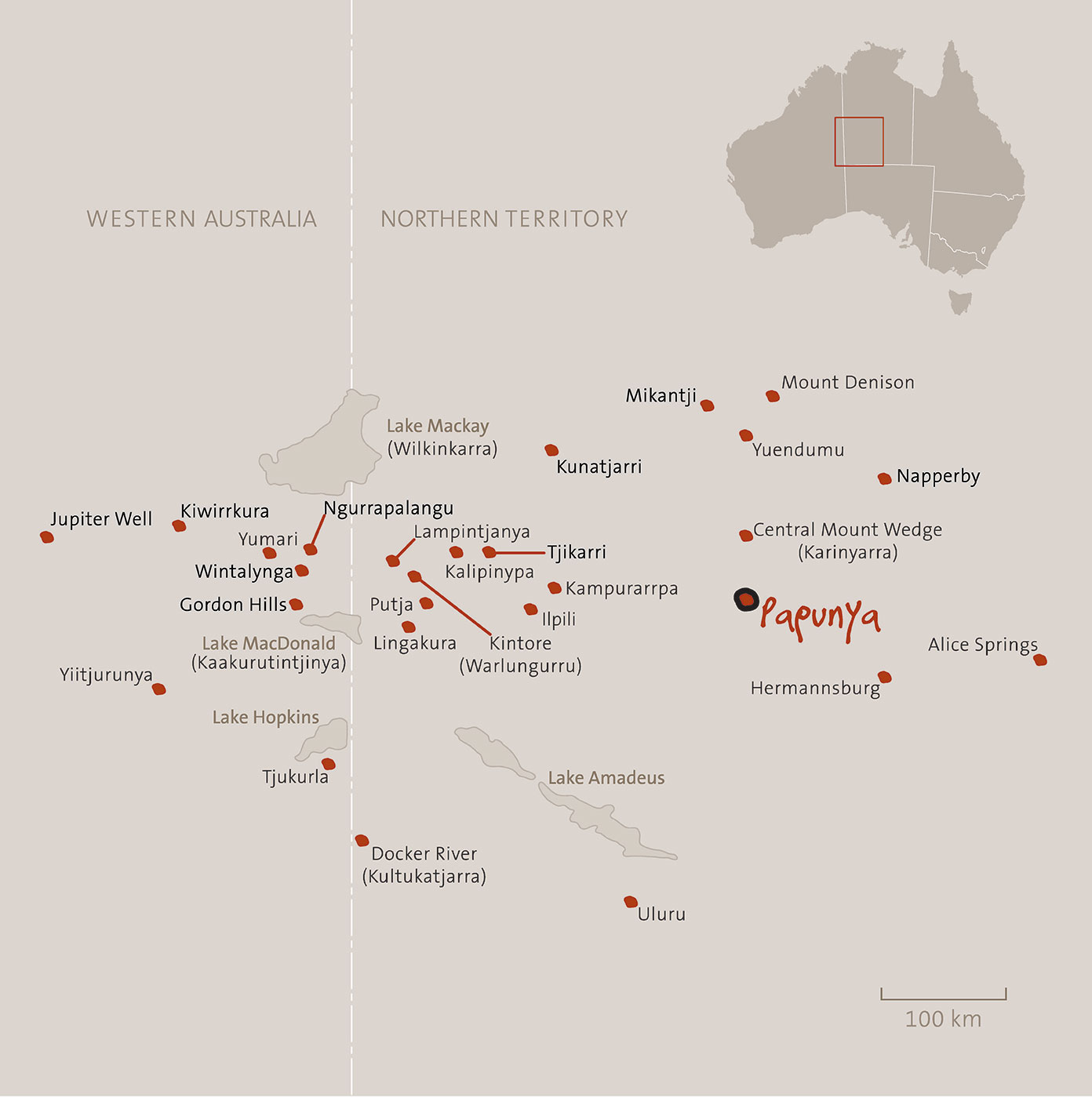The Dreaming: The sacred stories of sacred ancestors
Many of the paintings in this exhibition tell stories of the activities of sacred ancestral beings. Aboriginal people refer to these collectively as ‘the Dreaming’. In the Dreaming the great ancestral beings created the world through their actions. In creating the world they left their spiritual presence in the features of the land – a presence that is still there today. So, for Aboriginal people, the Dreaming exists in both the past and the present. The ancestral beings of the Dreaming had many forms. They could be human, animals or plants. They could be giant or small. Their actions made all the hills, plains and rivers. Where they built shelters could become mountains, where they dragged their digging sticks could become river channels. Their footsteps could become lakes. Their actions and relationships, both good and bad, also provide moral stories, guiding Aboriginal people in correct behaviour. When Aboriginal people travel their Country today they see the hills, trees, animals and plants – everything – as the living embodiment of the sacred ancestral beings of the Dreaming. |
|
Collection history
Many of the works in this exhibition were collected by the Aboriginal Arts Board of the Australia Council during the 1970s. The Aboriginal Arts Board was created in 1973, with members who were all Indigenous Australians. It fostered Aboriginal arts, literature, theatre, dance, music, painting and craft, and also provided grants for Aboriginal communities to employ managers and to help preserve and sustain Aboriginal culture, arts and crafts. Some of the Papunya paintings bought by the Aboriginal Arts Board were lent or given to Australian embassies around the world. Others were donated to public museums and galleries in Australia and overseas. These gifts helped to raise the profile of Aboriginal art in the commercial art market. The Aboriginal Arts Board also purchased paintings for display in travelling exhibitions, which toured Africa, Canada, Indonesia, Japan, New Zealand, the United Kingdom and the United States between 1973 and 1981. In the 1980s the Board wound up its exhibition program and, in 1990, the historic collection of Papunya paintings was transferred to the National Museum of Australia. |
|
Papunya map
Papunya lies close to the Tropic of Capricorn, in the far southwest corner of Australia’s Northern Territory. The settlement is 240 kilometres northwest of Alice Springs. This map shows sites of significance in the area.



